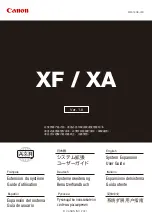
C) Slide Switch
T h e operation of this switch is made by sliding its k n o b
back and forth. This is suitable for switching signals be
cause most of this type slide a contact piece on a fixed piece
and scrub a n d clean the contact surfaces.
This type is divided into t w o . One is operated directly and
the other indirectly with the help of an additional mecha
nism. The former is not mounted on front panel but is used
for selecting subsidiary functions because its operational
feeling is p o o r .
The latter is further divided into t w o . O n e simply slides
a contact piece back and forth, and the other has a spring
inside and returns the piece to the original position when
the finger is released.
Most switches of this type have two or three contacts and
two t o twelve circuits. T h e direct type is used for selecting
F M de-emphasis, A M channel space of 9 k H z or 10kHz,
car stereo's speakers 2 or 4, etc. T h e indirect type is for
selecting R E C / P B of a tapedeck, portable stereo, etc.
Photo
4
Slide Switches
d) Lever switch
Lever switch is basically the same as the single-key push
switch and has a lever for rapidly opening and closing a
circuit. Snap switch discussed later, however, has been dis
tinguished from it.
It is easy to operate the lever and t o feel selector position
with a finger although it occupies a large space. This is,
therefore, employed only when the panel space is large
enough. T h e use is the same as that of single key push
switch such as power switch.
Photo
5
Lever Switches
6









































